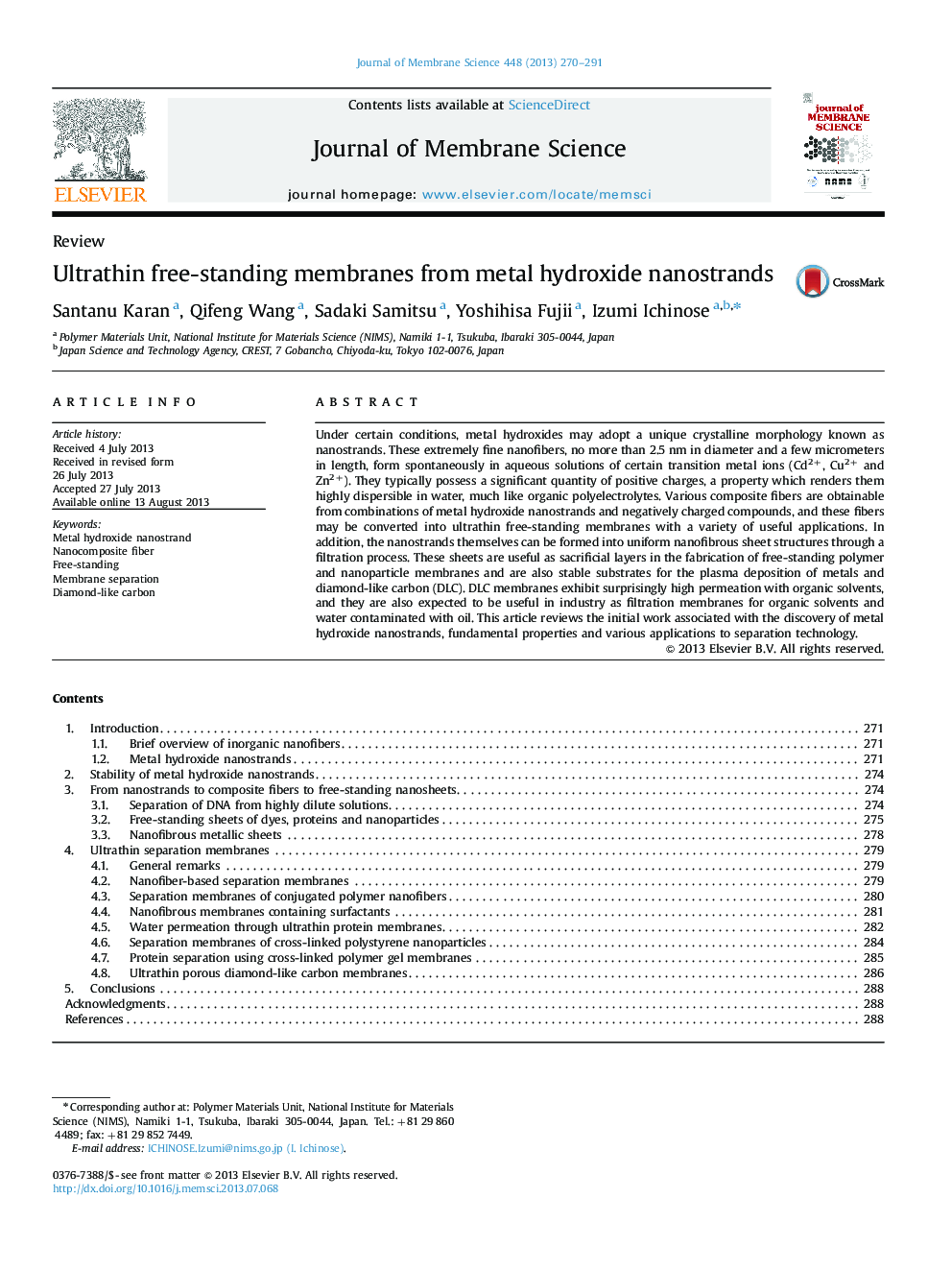| Article ID | Journal | Published Year | Pages | File Type |
|---|---|---|---|---|
| 634112 | Journal of Membrane Science | 2013 | 22 Pages |
•Surprisingly positively charged “metal hydroxide nanostrands” were discovered.•The nanostrands form various nanocomposite fibers with negatively charged materials.•These nanocomposite fibers can be converted to nanoporous free-standing membranes.•The nanostrand sheets are useful to form porous inorganic membranes via CVD methods.•DLC membranes may largely improve the performance of the present OSN membranes.
Under certain conditions, metal hydroxides may adopt a unique crystalline morphology known as nanostrands. These extremely fine nanofibers, no more than 2.5 nm in diameter and a few micrometers in length, form spontaneously in aqueous solutions of certain transition metal ions (Cd2+, Cu2+ and Zn2+). They typically possess a significant quantity of positive charges, a property which renders them highly dispersible in water, much like organic polyelectrolytes. Various composite fibers are obtainable from combinations of metal hydroxide nanostrands and negatively charged compounds, and these fibers may be converted into ultrathin free-standing membranes with a variety of useful applications. In addition, the nanostrands themselves can be formed into uniform nanofibrous sheet structures through a filtration process. These sheets are useful as sacrificial layers in the fabrication of free-standing polymer and nanoparticle membranes and are also stable substrates for the plasma deposition of metals and diamond-like carbon (DLC). DLC membranes exhibit surprisingly high permeation with organic solvents, and they are also expected to be useful in industry as filtration membranes for organic solvents and water contaminated with oil. This article reviews the initial work associated with the discovery of metal hydroxide nanostrands, fundamental properties and various applications to separation technology.
Graphical abstractFigure optionsDownload full-size imageDownload high-quality image (240 K)Download as PowerPoint slide
